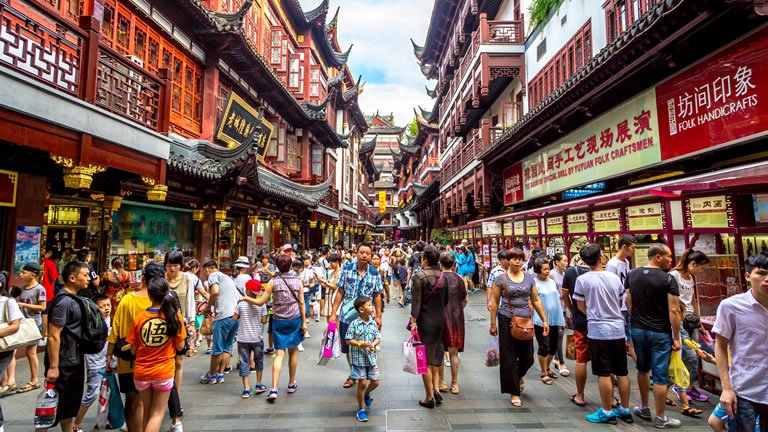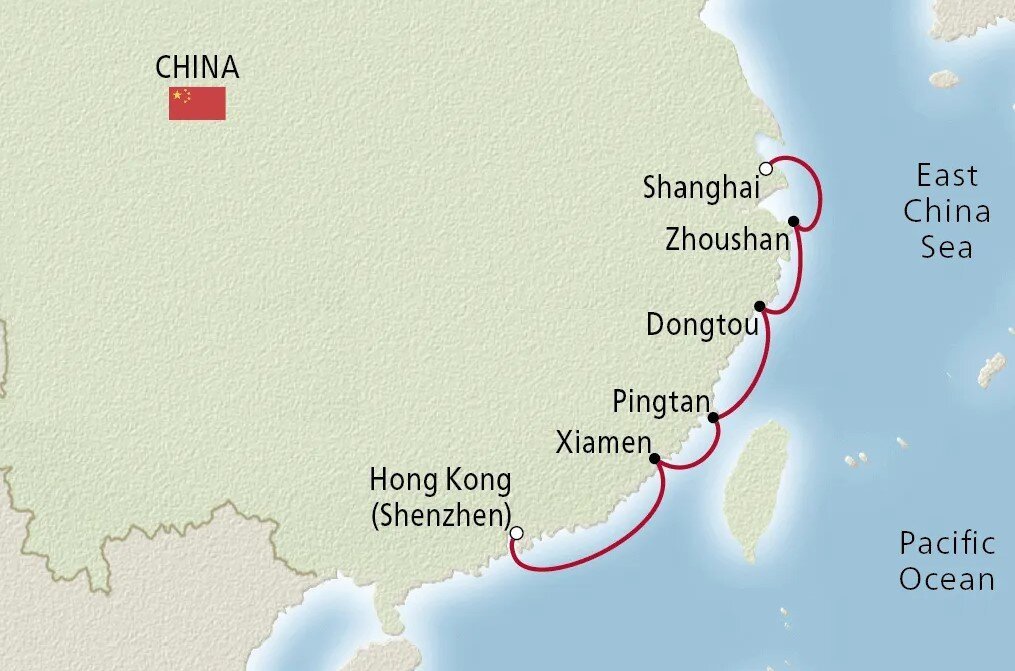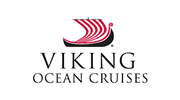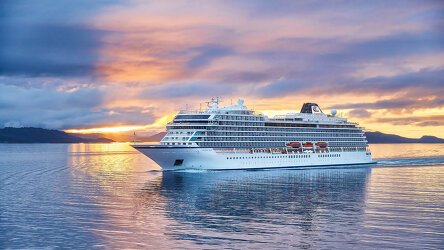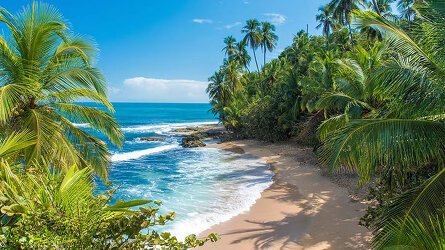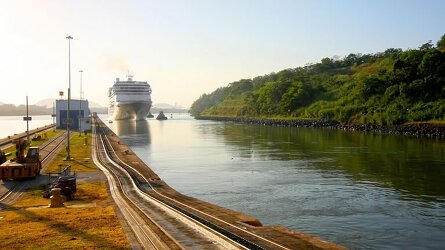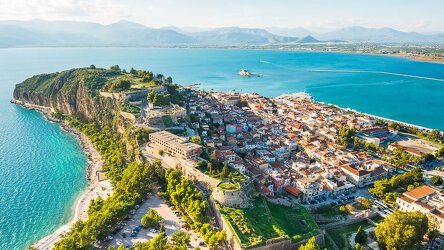Overview
Itinerary
Embark your ship and settle into your stateroom. China's largest city and one of the world's most important ports, Shanghai began as a fishing village 5,000 years ago. Long a draw for people from around the world, it has a history of being an open-minded city with a freewheeling character. Today, it is a modern metropolis and center of finance that orbits around its famous Bund, the elegant riverfront promenade overlooked by colonial-era banks and trading houses. Shanghai's old quarter retains the narrow lanes and street markets of yore. The renowned Shanghai Museum contains a wonderful collection of ancient Chinese art.
Straddling the west bank of Huangpu River, Shanghai's historic Bund provides sweeping views of the city's past and future. Elegant colonial architecture overlooks the famous walkway, from the neo-Renaissance Union Building to the grand Customs House. On the river's opposite bank, the skyline of Lujiazui in the Pudong District points Shanghai toward tomorrow. The Oriental Pearl Tower boasts a space-age design with its pair of orbs. Other skyscrapers, including the pagoda-like Jin Mao Tower and the Shanghai World Financial Center, are among the world's tallest buildings.
The East China Sea is a vital maritime route for international trade and fishing, connecting China, Japan and South Korea. Its history is entwined with regional cultural exchange, shaping the area's heritage and identity. As you sail today, savor a range of international cuisine on board. Choose from a variety of international flavors at the World Café, enjoy al fresco dining on the Aquavit Terrace, or regional specialties in The Restaurant.
Zhoushan has an ancient connection to the sea. A coastal city, it is located on the largest island in its namesake archipelago, which encompasses nearly 1,400 islands of varying size and more than 3,000 reefs. The surrounding waters of the East China Sea are renowned for their biodiversity, teeming with an array of fish, shellfish and crustaceans. From its early days as a traditional fishing community, it has evolved into one of China's most important ports and a prominent fishing center, supplying not only the domestic demand but also the international market.
Dongtou is a district in the southern Zhejiang province, the largest of a 168-island archipelago in the East China Sea. It has a strong fishing tradition, and many of its coastal villages are home to colorful fishing boats anchored just offshore. The picturesque district is also renowned for its peculiar rock formations; formed as the result of years of erosion by the elements, they provide an otherworldly and captivating backdrop. The district's most iconic landmark is Wanghai, a temple with more than 1,500 years of history.
Pingtan is located off the southern tip of Fuzhou, across the strait from Taiwan. The largest island in the Fujian province and the fifth-largest China, it straddles the boundary between the East and South China Seas. Known as the 'Maldives of China,' Pingtan is renowned for its beautiful coastal scenery, including pristine beaches, clear waters and numerous undersea reefs. Offshore, various weathered granite sea stacks dot the coast, the product of eons of erosion by the sea. Long a center for fishing, Pingtan is now a popular destination during the summer months.
Xiamen straddles the islands at the mouth of the Jiulong River and boasts picturesque colonial architecture. One of China's most fascinating cities, it is graced by salty sea breezes, rocky promontories and gleaming glass towers. Xiamen has been largely influenced by the Hoklo people. Han Chinese whose ancestors hail from this Fujian province, they continue to hand down their own unique dialect and cultural traditions. The city's Nanputuo Temple complex, a sacred Buddhist temple, is one of China's most revered and attracts pilgrims from all corners of the nation.
The South China Sea has been one of the world's major trade routes for centuries. Today, one-third of the world's maritime shipping passes through its waters, which are also rich fishing grounds and potential energy resources. Renew your body, mind and spirit in our Scandinavian-inspired Spa, a Nordic sanctuary of holistic wellness, today while at sea. Whether you unwind in the Sauna, refresh in the Snow Grotto or take a dip in the Thermal Pool, you will feel recharged and revitalized.
Nicknamed China's 'Silicon Valley,' the modern metropolis of Shenzhen is a symbol of the country's rapid economic growth and reform. Since the late 1970s, Shenzhen has transformed from a small fishing village into a global technological and financial hub. Today, it is home to numerous tech giants, startups and research institutions, making it a center for innovation, electronics manufacturing and the global technology industry. A diverse cityscape features futuristic skyscrapers, while its proximity to bustling Hong Kong imparts an international flavor to the city.
Shenzhen is the gateway to Hong Kong, a dynamic metropolis that blends its ancient Chinese heritage with global influences. Its skyline boasts towering skyscrapers set against a backdrop of lush mountains. A former British colony, Hong Kong has evolved into a global financial center. Victoria Harbour symbolizes this economic prowess, with the nightly Symphony of Lights illuminating the harbor's vibrancy. Bustling markets exude a local flair, while the fusion of Cantonese cuisine, Michelin-starred restaurants and delicious street food add to the city's cultural allure. After breakfast, disembark your ship and transfer to Hong Kong International Airport for your journey home.
Life Onboard Viking Yi Dun
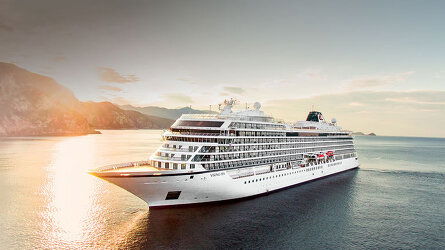
Formally known as Viking Sun, the reimagined Viking Yi Dun invites travellers on an unparalleled journey through China, offering an intimate and immersive cruising experience. Read more

Viking are destination experts. With no casinos or children on board, you can be assured that the focus is firmly on enrichment and education. Read more
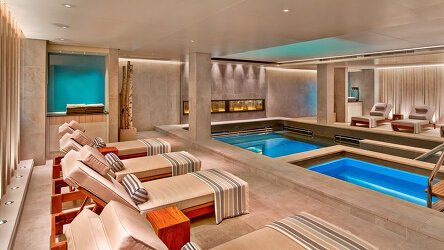
After a day of exploration or just to enhance the relaxation of a day at sea, the on-board Spa will leave you feeling recharged and revitalized. Read more

Viking offer eight on board dining options. Beer, wine and soft drinks are available with lunch and dinner at no additional charge of fee. Read more
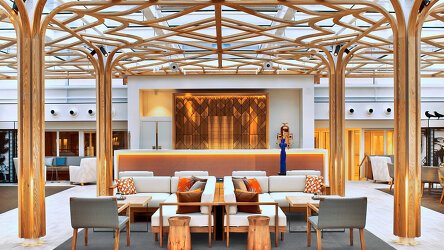
Viking proudly includes all that you need and nothing you do not. A variety of features and services valued at $200 per person per day are standard inclusions in your cruise. Read more
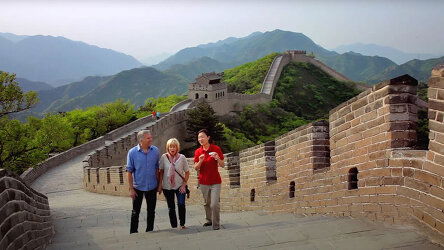
Viking include one complimentary shore excursion in every port of call. Enjoy exclusive entry to cultural treasures and seldom-seen collections around the world. Read more

Trip Reviews (1) Most Recent 'China Discovery' Reviews
The tours were outstanding. The lectures very interesting and the entertainment was unbelievable. Pickups , transfer and flights well organised by Tracey at Global Journeys. Looking forward to our next cruise next year.
Brochure
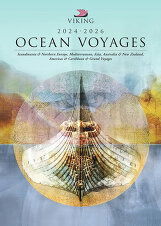
Viking Ocean Cruises (2025-26)
Availability Click on prices below to view cabin upgrades and details
Tour & cruises prices are per person. Prices shown have savings applied, are subject to availability and may be withdrawn at any time without notice. Pricing and trip details are correct at this point in time, however are subject to confirmation at the time of booking and are subject to change by Viking. For cruise itineraries, cabin images are sourced from Viking. These should be treated as indicative only. Cabin inclusions, upholsteries and room layout may differ to the image(s) shown depending on the ship selected and your sailing dates.
